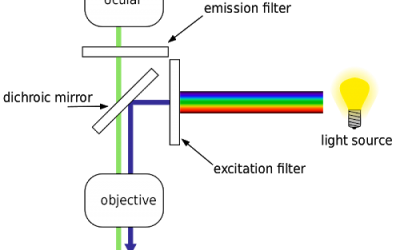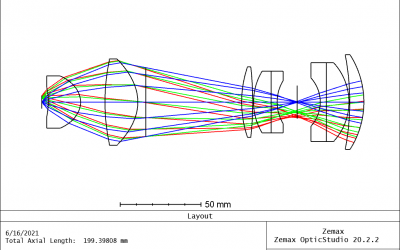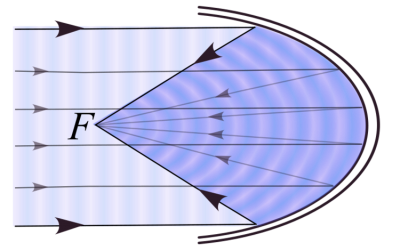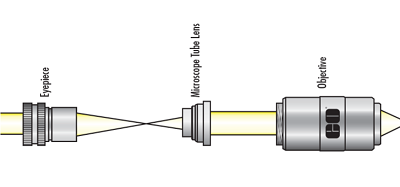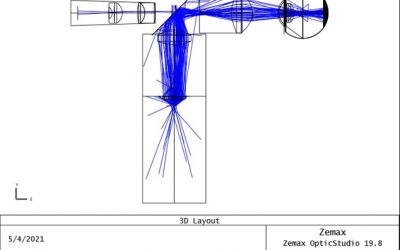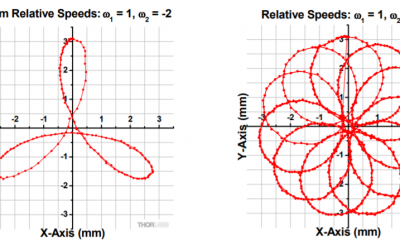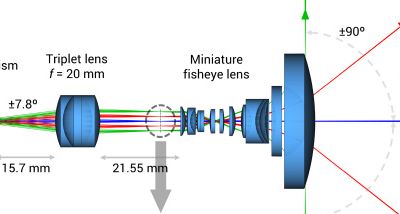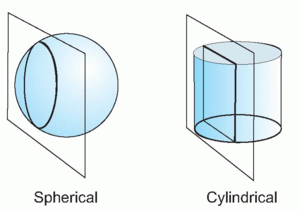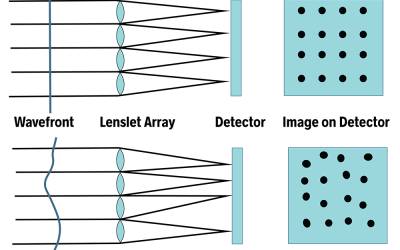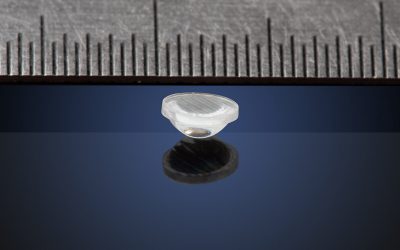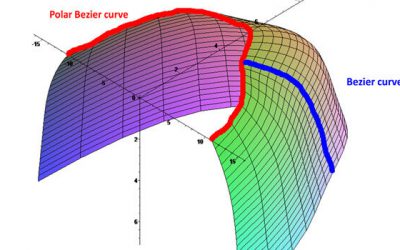Among the many lens design configurations, one of the most common lens optical layouts is the Tessar Lens. This layout was created by Paul Rudolph in 1902 for photographic lenses. In the golden age of film photography, the...
optical design
M squared and designing laser beam optics
by Victor Argueta | FAQ, optical design
There are different ways to calculate the quality of a laser beam. In general, we want our laser beam to be as close to a theoretical Gaussian Beam as possible. The question then is how do we measure the profile of our beam and how do we compare it against our ideal...
Confocal Microscope Design: Explained
by Victor Argueta | 3D, FAQ, optical design
Confocal microscopy is a type of microscopy that uses a focused laser beam to illuminate a sample and a pinhole aperture to eliminate out-of-focus light, resulting in high-resolution images with improved contrast and clarity. The name "confocal" refers to the use of a...
Projection Lens Design
by Victor Argueta | illumination lens design, lens design, optical design, Zemax
Projection systems are one of the most common consumer optical devices (probably second to photographic systems). They allow us to view images on a screen (usually) by magnifying and projecting them at distances from a few centimeters to several meters away...
Fisheye Lens Design
by Victor Argueta | FAQ, illumination, lens design consulting, optical design
Anyone who has peaked through a hotel room peephole has used a fish eye lens. Usually, the fish eye lens has a very short focal length (less than 15mm for a 35mm-size image sensor), but a large field of view (FOV). The latter can be as large as...
Parabolic Mirror Design
by Victor Argueta | FAQ, optical design, optical engineering, optics definitions
Parabolic mirrors are optical systems that are used to collect or distribute energy. They have a wide range of applications from solar collectors for water heating systems to microscopes and telescopes, and everyday flashlights. The most common way ...
Infinity Corrected Microscope Design
by Victor Argueta | optical design
Traditional Microscope systemTraditional microscope systems consist of two main optical elements: a microscope objective and an eyepiece. The microscope objective is placed close to the sample that we want analyzed. The distance between the objective lens and...
Non-sequential ray tracing
by Victor Argueta | illumination, optical design
When doing optical simulations using a program like ZEMAX, we can choose to do our simulations using two modes: sequential and non-sequential optics. Sequential optics, as the name indicates, follows the optical path of light as it goes from one surface to the next....
Apochromatic Lens Design
by Victor Argueta | FAQ, lens design, lens design consulting, optical design, optics definitions
In an achromatic lens design, we optimize such that two wavelengths, usually red (590nm) and blue (495nm), focus on the same image plane. This is done to reduce chromatic aberration. In this article, we’ll talk about a similar design type called an Apochromatic lens...
Understanding Free Space Optical Communication Design
by Victor Argueta | FAQ, optical design, optics definitions
A previous post discussed underwater optical design. This week, we will review the diametrical opposite application - free-space optical communication (FSO). As with underwater optical design, one of the challenges facing FSO is the optical signal propagation...
Unlocking Risley Prisms: Precision in Optical Steering | OFH
by Victor Argueta | FAQ, optical design, opto-mechanical design
Introduction Previous posts have explained reflective, anamorphic and dispersive prisms and their use in optical systems. Today we will explain a prism configuration called Risley Prism. A Risley prism is actually two wedge prisms close to each other that can be...
How the Abbe Sine Condition impacts optical designs
by Victor Argueta | FAQ, lens design, optical design
When making first order optical design calculations, most engineers use parameters based on paraxial (or ideal) systems. That is, lenses in which the chief rays are very close to the optical axis. However, that’s not always the case, and as we move...
Exploring LIDAR Lens Design: Innovations and Applications in Optical Engineering
by Victor Argueta | FAQ, lens design, optical design
Introduction LIDAR, short for Light Detection and Ranging. In recent years, LIDAR has emerged as a transformative force across a multitude of industries, revolutionizing everything from autonomous vehicles to archaeology. But what exactly is LIDAR, how does it work,...
5 Applications of Cylindrical Lenses
by Victor Argueta | FAQ, lens design, optical design, optics
When thinking of a ‘lens’, most people have the image of a spherical lens in their mind, but there are different geometries for lenses, and one of the most common is the cylindrical lens. What’s the difference between spherical and geometrical lenses? And what...
Understanding RMS Wavefront Error: An In-Depth Exploration | OFH
by Victor Argueta | optical design, optics, optics definitions, Zemax
Introduction to RMS Wavefront Error As mentioned in several articles in this blog, aberrations are of great relevance when designing an optical system. The objective being to design a system that creates a “good image”. However, there are different metrics to...
Design considerations for microlenses and lensarrays
by Victor Argueta | FAQ, lens design, optical design
As optical systems are reduced in size, we encounter new engineering challenges when analyzing and designing lenses. These are issues that we usually don’t see when working with larger elements. This article will review some of the challenges when designing...
Benefits of Multiphysics Design
by Victor Argueta | mechanical design, optical design, opto-mechanical design, Zemax
Simulating any optical system in Zemax is a fundamental part of our optical design process. Among many reasons, we simulate in Zemax so we can evaluate the optical performance, whether in terms of aberrations for imaging systems or power efficiency for...
How Aspheric and Freeform lenses work
by Victor Argueta | lens design, OFH, optical design, Zemax
A key aspect of an optical product development is the creation of a quality optical system design optimized to reduce aberrations and system cost. In an attempt to reach a balance between cost and performance, optical designers have created lenses with different...
Benefits of Zemax’s Black Box Lenses
by Victor Argueta | lens design, optical design
When integrating off the shelf lenses into optical systems, it is essential to have full information about how a lens will perform with other elements in the system. When multiple component vendors ( ie electronics, mechanical, optical) are involved, data...
Types of Optical Prisms
by Victor Argueta | mechanical design, optical design, optics, optics definitions
One of the most famous images in the history of optics is that of Sir Isaac Newton with a beam of white light going through a glass prism and a rainbow coming out the other side. It is one of the most famous optical experiments, not only for its simplicity, but also...


